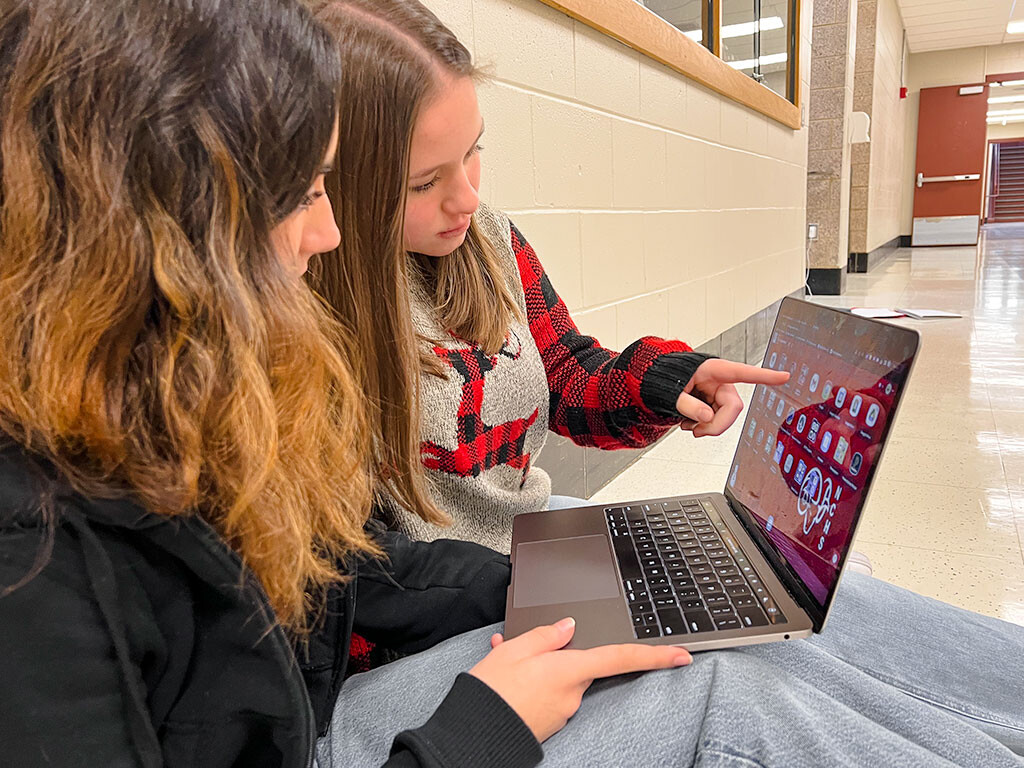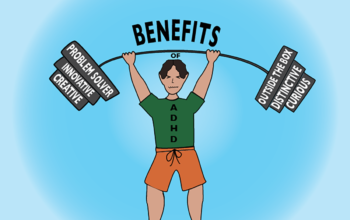Ryan Boulanger, Reporter
@ryanbcourant
Students all over the building spend hours each day in front of a screen, whether it be clicking away at frustrating assignments or emailing teachers for help on their upcoming exam. In an academic environment where the average student relies 24/7 on technology, it is imperative that we learn the importance of following good habits online in order to maximize our use of district tools in addition to protecting our own security.
Emily Hernberg, the district’s Technology Integrator is a member of the library’s digital learning team that constantly outputs software and strategies to students and staff alike in order to streamline everyone’s technology experience. “The core of my job is that I work with teachers to design, plan, and deliver lessons centered around a specific tool, whether that’s our podcast studio, Schoology, or Classlink,” Ms. Hernberg said.
Maximizing the potential of our current tools means saving ourselves time on screens. “Years ago, we used to have a different login, a different link for almost every single tool that we had.” Ms. Hernberg said. “Class Link is actually a big time saver when you use it for its intended purpose.”
Students have recognized some of the tools that have been put in place, however, some are still undiscovered or misused. Sophomore Faizal Zakir Hussain said, “Especially all the folders on Classlink- that hold links to databases- those can be really helpful for certain projects, but I don’t always see students using them.”
Junior Hugo Smith added, “Since most of my assignments are online, I find myself using technology frequently. Additionally, It’s often easier to access information online as opposed to in text when I need extra explanation for a certain topic.”
The school’s library team helps to spread information relating to these new tools via many methods. “We communicate with parents, we communicate with students, and we also hold seminars in the library, and in classes, for example at the end of last year we held a class that taught graduating seniors how to stay safe online after they leave our system.” Ms. Hernberg said. The district actively protects its students’ online presence by controlling the amount of data certain websites can view pertaining to your profile. “It’s this delicate balance between giving your information out so that your browser can work faster, but also not letting all that information clog up the works.” Ms. Hernberg said.
Ms. Hernberg explained the importance of balancing the number of time students spend during their school day. “We always stress this driver word in education called pedagogy, which is how people learn, and that should be the driver. Technology should not be the driver.” Ms. Hernberg said.
Some of the main points that the library team has stressed this year so far include building good habits online. “Practicing good digital hygiene is really important, which is a big focus this year of the whole ICT team, and that’s keeping your cache and cookies clear, while at the same time allowing cookies to happen.” Ms. Hernberg said. “It’s mostly about good practices, and establishing a pattern of hygiene for yourself, almost like washing your hands.”
Additionally, all of the tools that the library team provides to students and staff to enable their success online and in the classroom are extensively background-checked before they are allowed for use at the high school. “There’s a student data privacy law in Connecticut, which was spearheaded by New Canaan parents several years ago, and it’s an important law that we take seriously. When we are choosing technology tools, we make sure that the company signs a contract with us to protect your information when using their website or software.” Ms. Hernberg said.
Although protected, it is still important to be mindful of the footprint we leave when using certain websites and how to balance the information we give out and take in. “It’s less about the software and the technology tools and more about the practices and habits you use because in another 10 years, they’ll be totally different.” Ms. Hernberg said.




